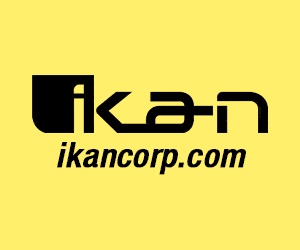Gray Media navigates regulatory uncertainty while eyeing growth opportunities

Weekly insights on the technology, production and business decisions shaping media and broadcast. Free to access. Independent coverage. Unsubscribe anytime.
Gray Media reported Q3 2025 revenue of $749 million during its November 7 earnings call, with leadership emphasizing the company’s strategic positioning amid what Executive Chairman and CEO Hilton Howell characterized as an industry operating in “the wild, wild west” of regulatory uncertainty.
The company exceeded its expense guidance by $17 million, driven by cost reductions across its television stations. Adjusted EBITDA reached $162 million for the quarter, while political advertising revenue hit $8 million—above expectations for an off-cycle year.
Howell acknowledged the unprecedented regulatory ambiguity facing broadcasters, noting that “for the first time in the history of our business, we are really operating in the wild, wild west. No one knows what the rules actually are.”
The company announced plans to enter six new markets by acquiring top-ranked local news stations and creating 11 new Big Four duopolies.
Chief Legal and Development Officer Kevin Latek emphasized that Gray remains “laser-focused” on previously announced transactions while monitoring FCC proceedings expected to clarify regulatory restrictions by year-end.
“We think there are other opportunities to do transactions like the ones we’ve done here, which is, say, sub-$200 million deleveraging deals that improve our portfolio and our balance sheet,” Latek said.
Howell stressed a cautious approach to expansion despite acknowledging “a lot of big opportunities to grow.” He emphasized the company’s responsibility to its 10,000 employees and their families, stating Gray “does not believe that Gray actually has to do anything” to maintain its current trajectory.
However, he added: “If we get an opportunity at the right price to get much bigger, we’re not going to run from it.”
The company’s political advertising underperformed historical patterns in the first three quarters, with fourth quarter guidance of $7 million to $8 million — significantly below the $20 million to $30 million typically generated ahead of a political year.
President and Co-CEO Patrick LaPlatney reported that core advertising finished down 3% in the third quarter, an improvement from the 4% decline in the first half. The company guided for flat to low single-digit growth in the fourth quarter.
“We’re really optimistic about 2026,” LaPlatney said, citing “very encouraging” early first quarter numbers.
Automotive advertising remained weak, down high single digits, while legal services continued double-digit growth to become a top-five category. Financial services showed high single-digit increases, and digital revenue maintained healthy growth.
The company faces challenges from the ongoing YouTube TV carriage dispute affecting its ABC stations. LaPlatney expressed frustration with the situation, noting: “Obviously, we prefer to have a voice in the MVPD negotiations for our stations. We don’t.”
On retransmission consent, CFO Jeff Gignac reported that network affiliation expenses declined 9% while retransmission revenue fell 6% in the third quarter. The company expects net retransmission revenue to decline slightly in the fourth quarter, primarily due to Atlanta station WANF’s conversion to independent status.
“You’re seeing the quarters flatten out,” Gignac said regarding net retransmission trends. “Ideally, it can turn positive, and we’re hopeful.”
Chief Operating Officer McNamara Breland reported positive results from WANF’s August 16 conversion to independent status in Atlanta, with the station adding 25.5 hours of news and local programming. “Viewers are responding. We’re seeing gains in mornings and key demos and in prime access,” Breland said.
The company completed refinancing transactions in July that extended its maturity profile through 2033, addressing all material maturities through December 2028 with less than 25 basis points impact on overall debt costs.
Gray finished the quarter with more than $900 million in liquidity and a total leverage ratio of 5.77x. The company reduced its full-year 2025 capital expenditure guidance by $15 million to a range of $70 million to $75 million.
The board declared a $0.08 per share quarterly dividend, consistent with recent quarters.





tags
Deregulation, Gray Media, Hilton Howell, Patrick LaPlatney, Quarterly Earnings, WANF
categories
Broadcast Business News, Broadcast Industry News, Featured